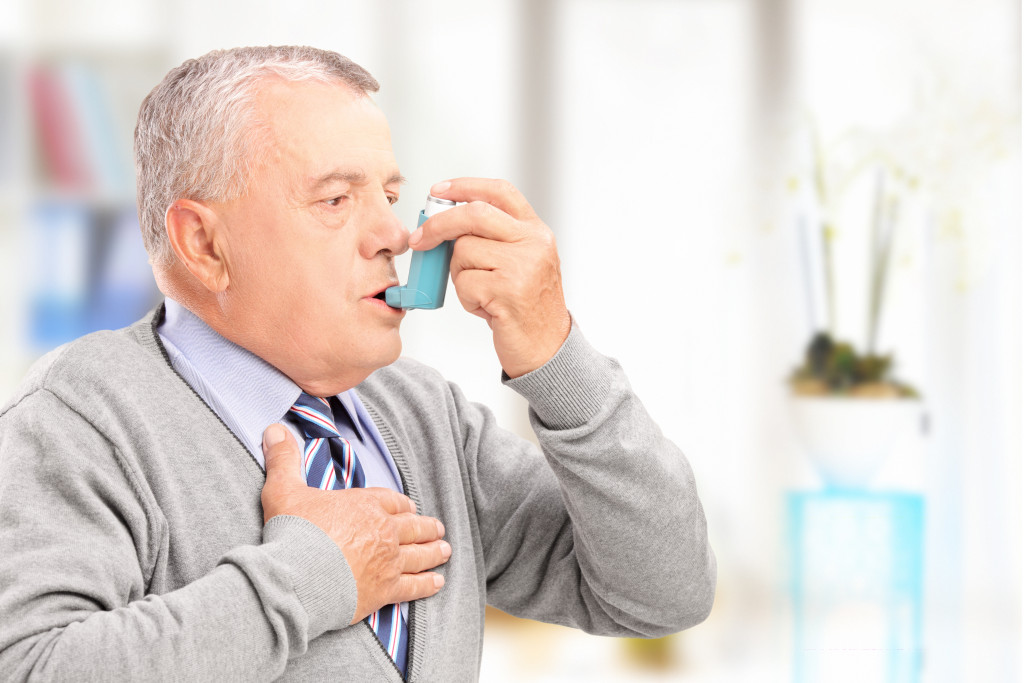If you have an asthma patient in your home, it is essential to take extra precautions to keep them safe. Asthma can be severe, and even a small amount of exposure to the wrong triggers can cause an attack. Here are four tips to help you keep your house safe for an asthma patient.
Keep it Clean
Assuming you’re living with someone with asthma, it’s essential to take extra care when it comes to keeping your house clean. Dust, pollen, and other allergens can trigger asthma attacks, so removing them from home as much as possible is essential. The good news is that you can take a few simple steps to make your home more asthma-friendly.
Start by vacuuming regularly with a HEPA filter vacuum. This will help to remove any dust or pollen that might be lurking in your carpets or upholstery. In addition, be sure to dust all surfaces — including ceiling fans and light fixtures — regularly. You might also want to invest in an air purifier to help keep the air in your home clean and allergen-free. Finally, try to keep pet dander to a minimum by brushing your pets regularly and keeping them out of bedrooms and other areas that aren’t welcome.
One of the biggest hosts of dust and animal dander is carpet. Hence, you need to clean the carpets thoroughly. You can also seek professional carpet cleaning help for this. Professionals cleaners have all the advanced tools that can ensure deep cleaning. Hence, it will prevent the accumulation of dust and allergic particles on the carpet, making your house safe for asthma patients.
Limit Exposure to Triggers
One crucial way to keep your house safe for asthma patients is to limit their exposure to triggers. Common asthma triggers include dust, pollen, smoke, and pet dander. To reduce exposure to dust, wipe down surfaces regularly with a damp cloth and vacuum frequently. You should also avoid using any products that contain fragrances or chemicals, as these can irritate the lungs. To reduce exposure to pollen, keep doors and windows closed during peak pollen hours and consider investing in an air purifier. To reduce exposure to smoke, refrain from smoking inside the house and ask visitors to do the same. Finally, to minimize exposure to pet dander, keep pets out of the bedroom and bathe them regularly. By taking these simple steps, you can help to create a safe and asthma-friendly home environment.

Grow a ‘Low-Allergen’ Garden
People with asthma are often told to avoid fresh flowers and cut grass because they can cause allergy symptoms. But did you know that there are ways to garden that can minimize allergy risks for asthma sufferers? By growing a “low-allergen” garden, you can help keep your home safe and healthy for someone with asthma.
There are a few things to remember when planning a low-allergen garden:
- Choose plants that produce little or no pollen. Many common flowers, such as roses and daisies, are high in pollen content. Instead, opt for varieties known to be low in pollen, such as impatiens or snapdragons.
- Avoid heavily scented plants, as their fragrance can trigger asthma symptoms.
- Make sure to keep your garden clean and free of debris.
A neat garden will be less likely to harbor mold and other allergens.
With a little planning, you can create a beautiful and safe outdoor space for an asthma sufferer. Following these tips can help reduce the risk of allergy attacks and ensure that everyone can enjoy your garden’s bounty.
Keep Distance From Pets
One of the best ways to keep yourself safe is to keep your distance from pets. Pet dander is a common trigger for asthma attacks, so limiting your exposure to it is important. If you have a pet, try to keep it out of your bedroom and other rooms where you spend a lot of time. You should also avoid letting your pet sleep on your bed or furniture. If you’re visiting someone else’s house, ask if they have any pets before entering. And if you’re close to a dog or cat, make sure to wear a dust mask.
Taking these simple precautions can help reduce your risk of having an asthma attack. Remember, every asthma sufferer is different, and what works for one person may not work for another. But if you’re diligent about avoiding your triggers, you’ll be more likely to stay healthy and free from asthma symptoms.
With these tips, you can help keep your house safe for an asthma patient. Make sure you know where their rescue inhaler is and how to use it. It is also a good idea to keep a list of emergency numbers handy, just in case. Remember, the key is to limit their exposure to triggers and to keep the house clean. By taking these steps, you can help to keep your asthma patient safe and comfortable.

